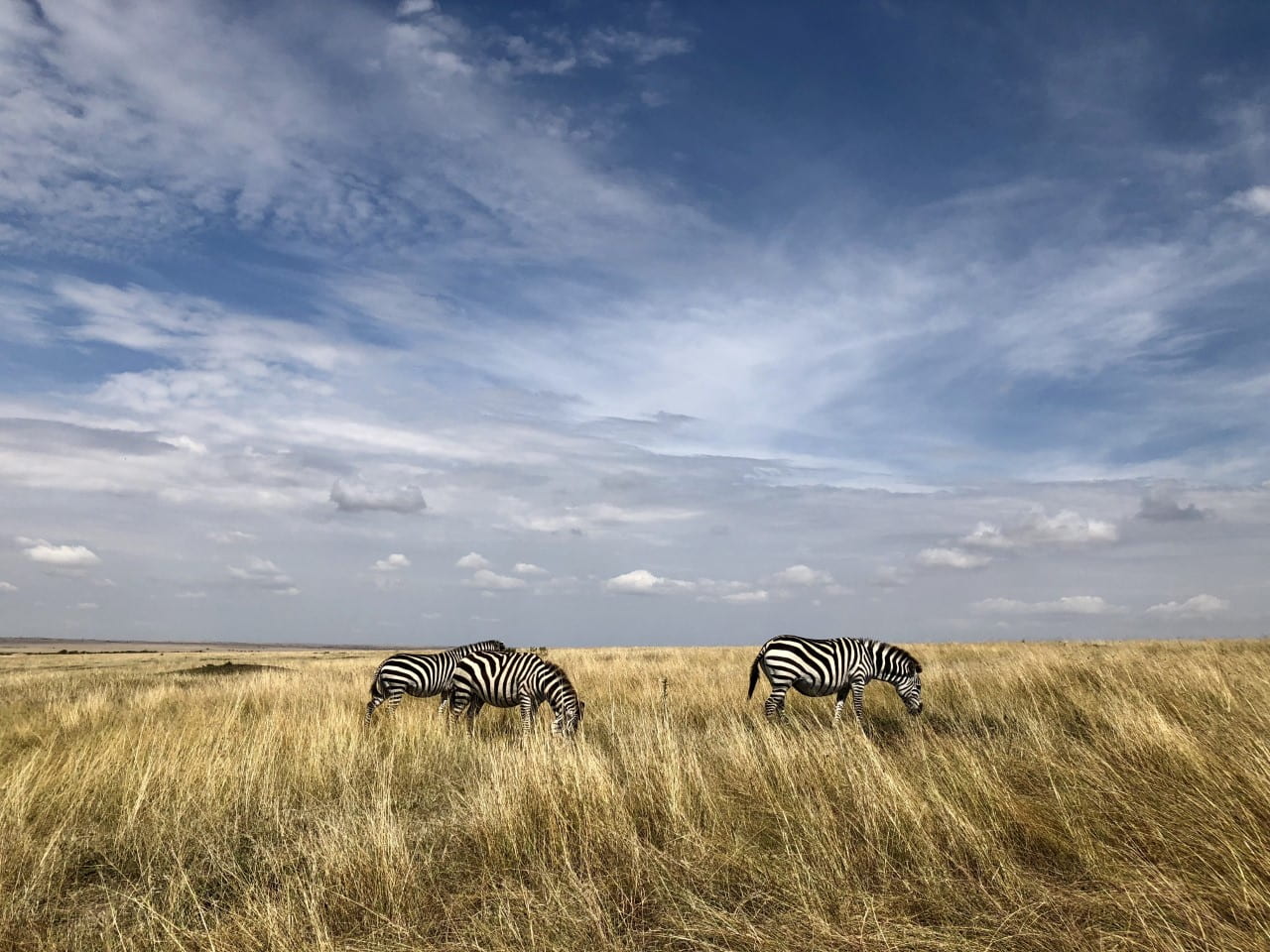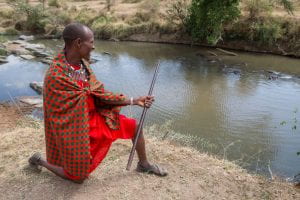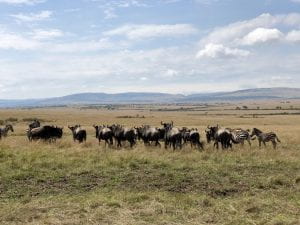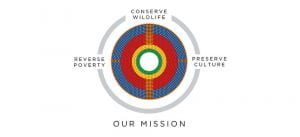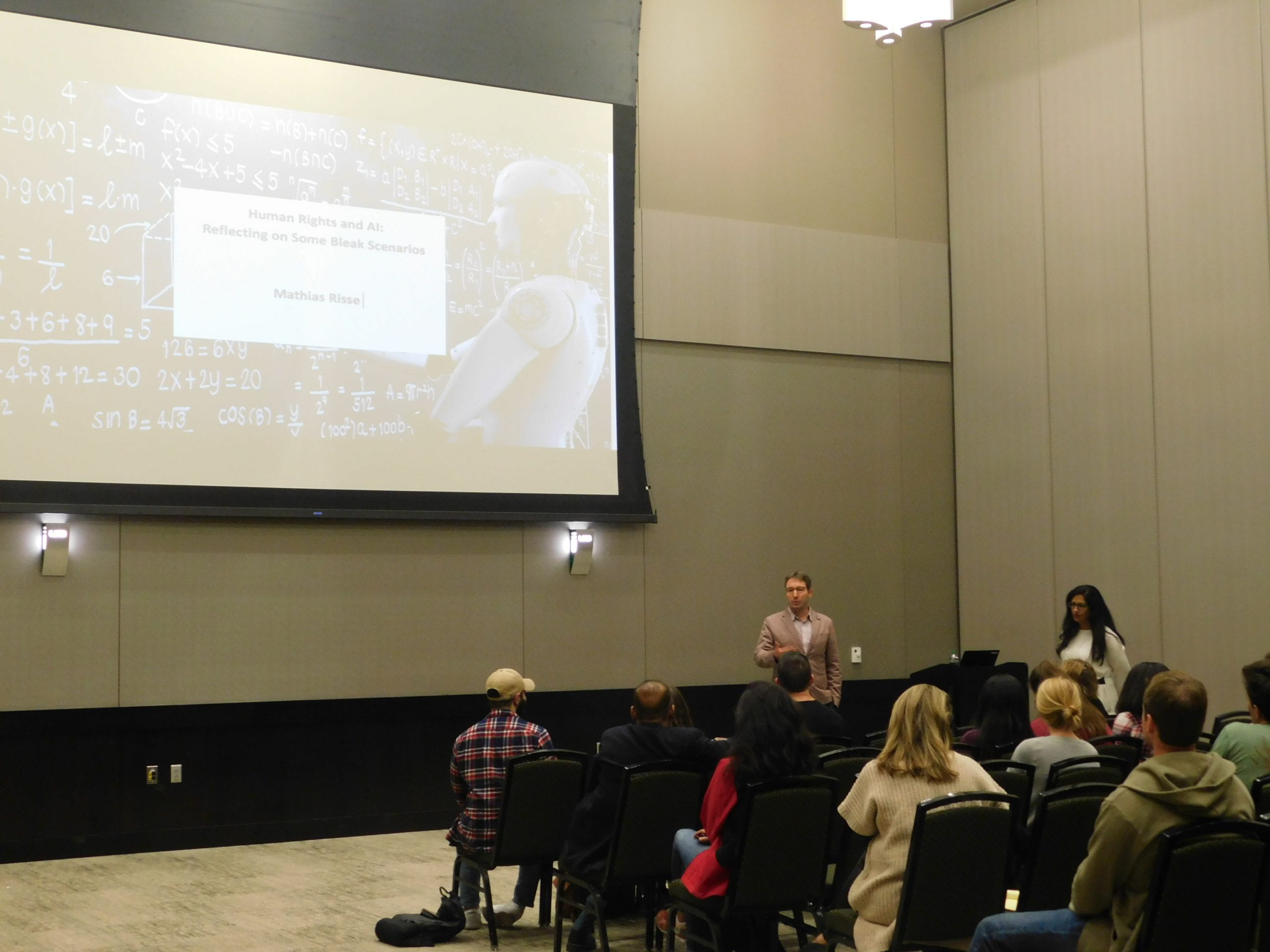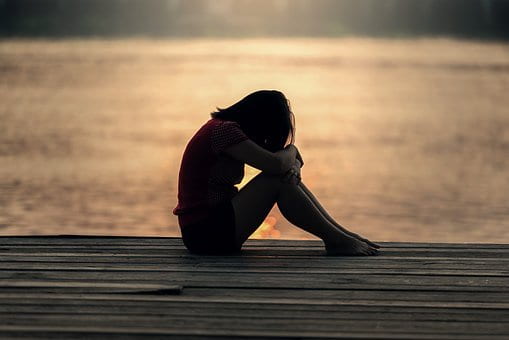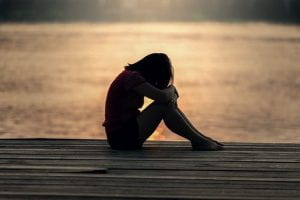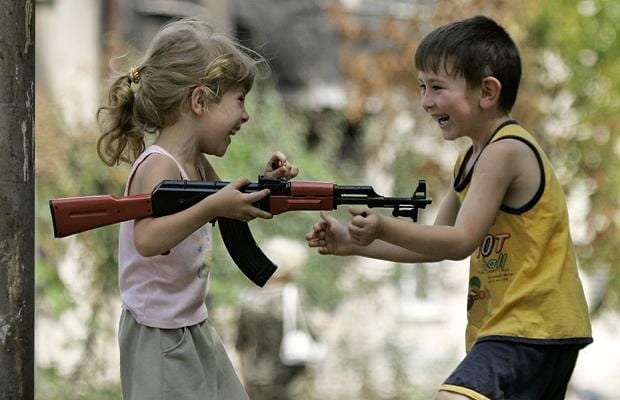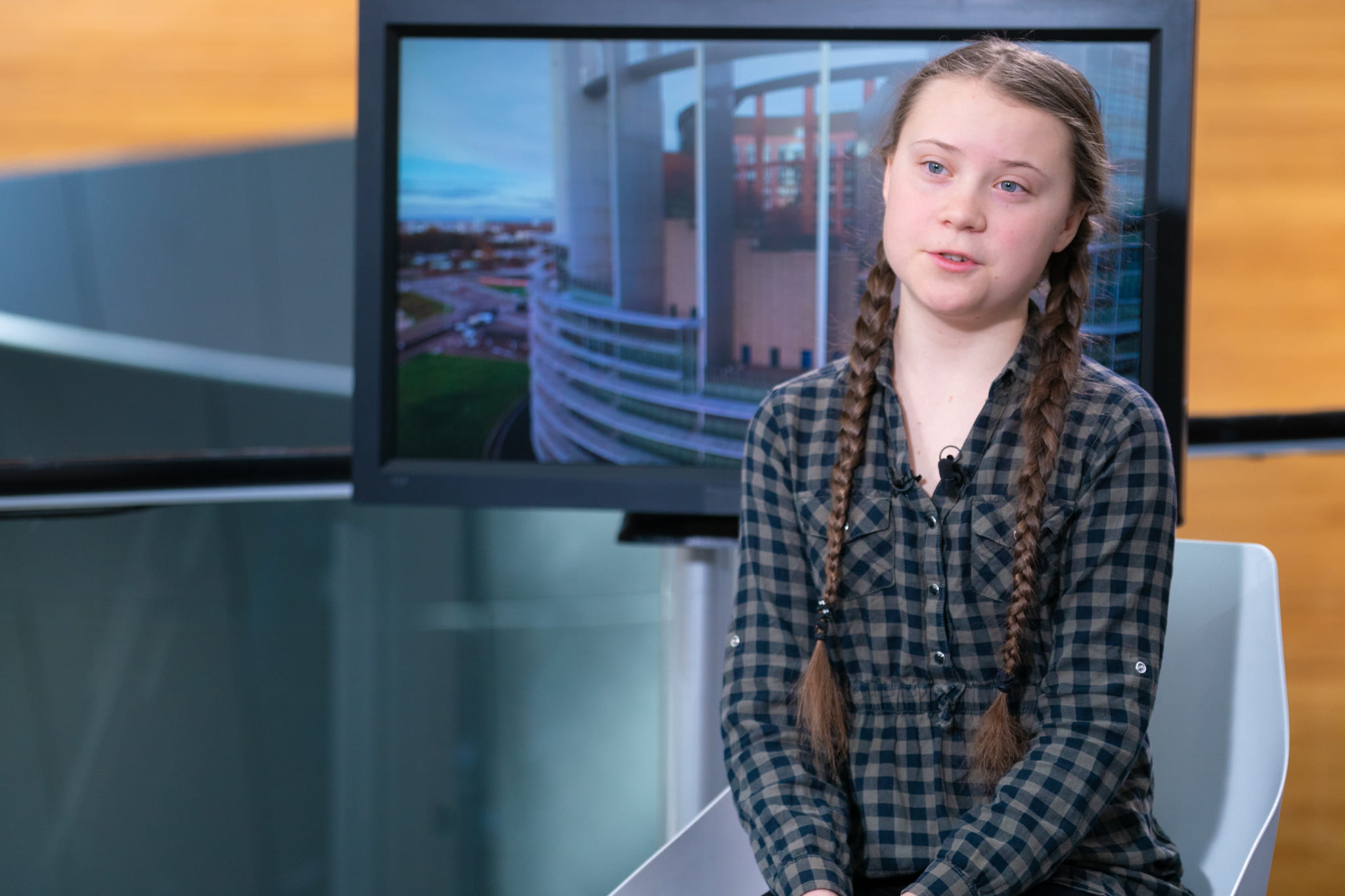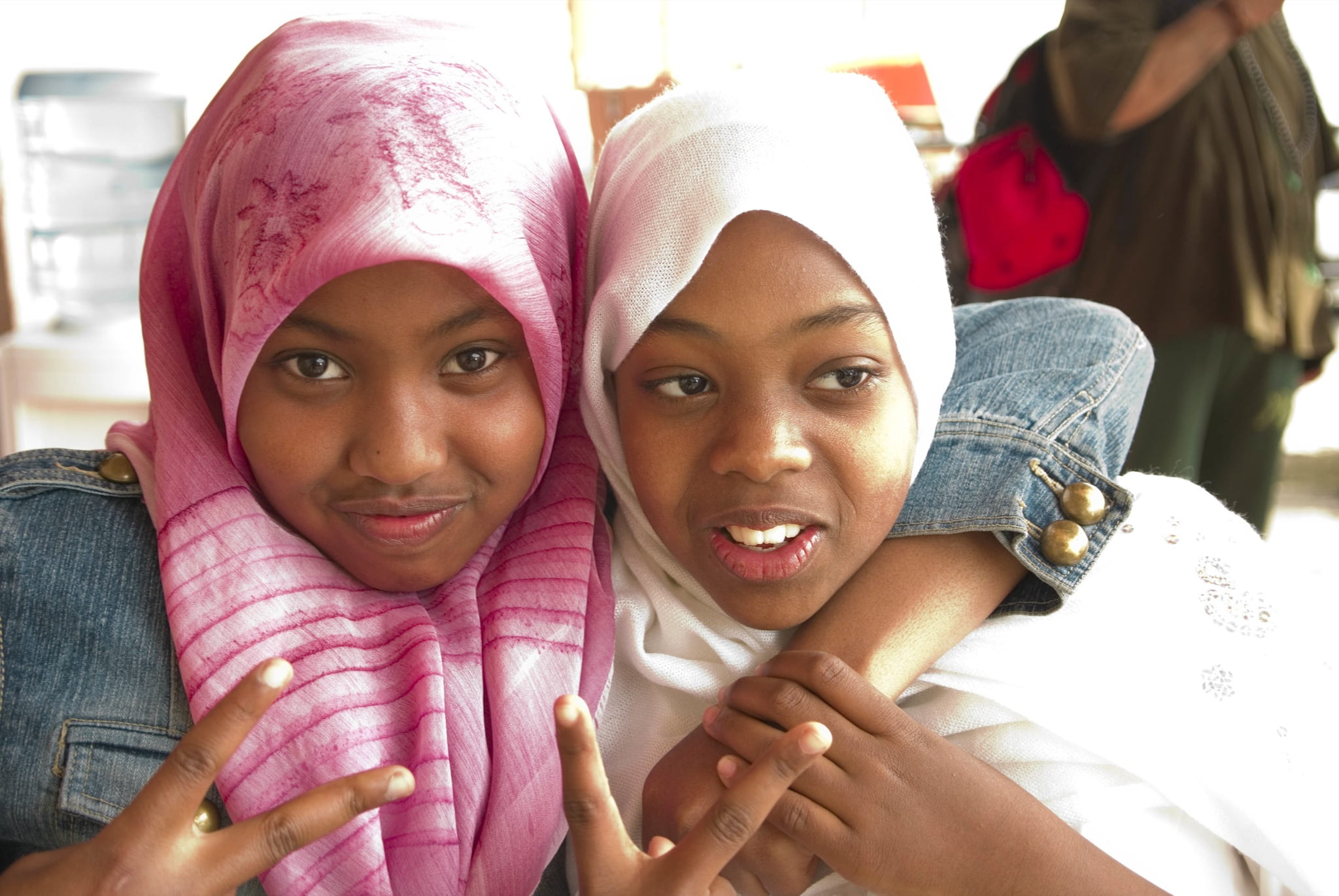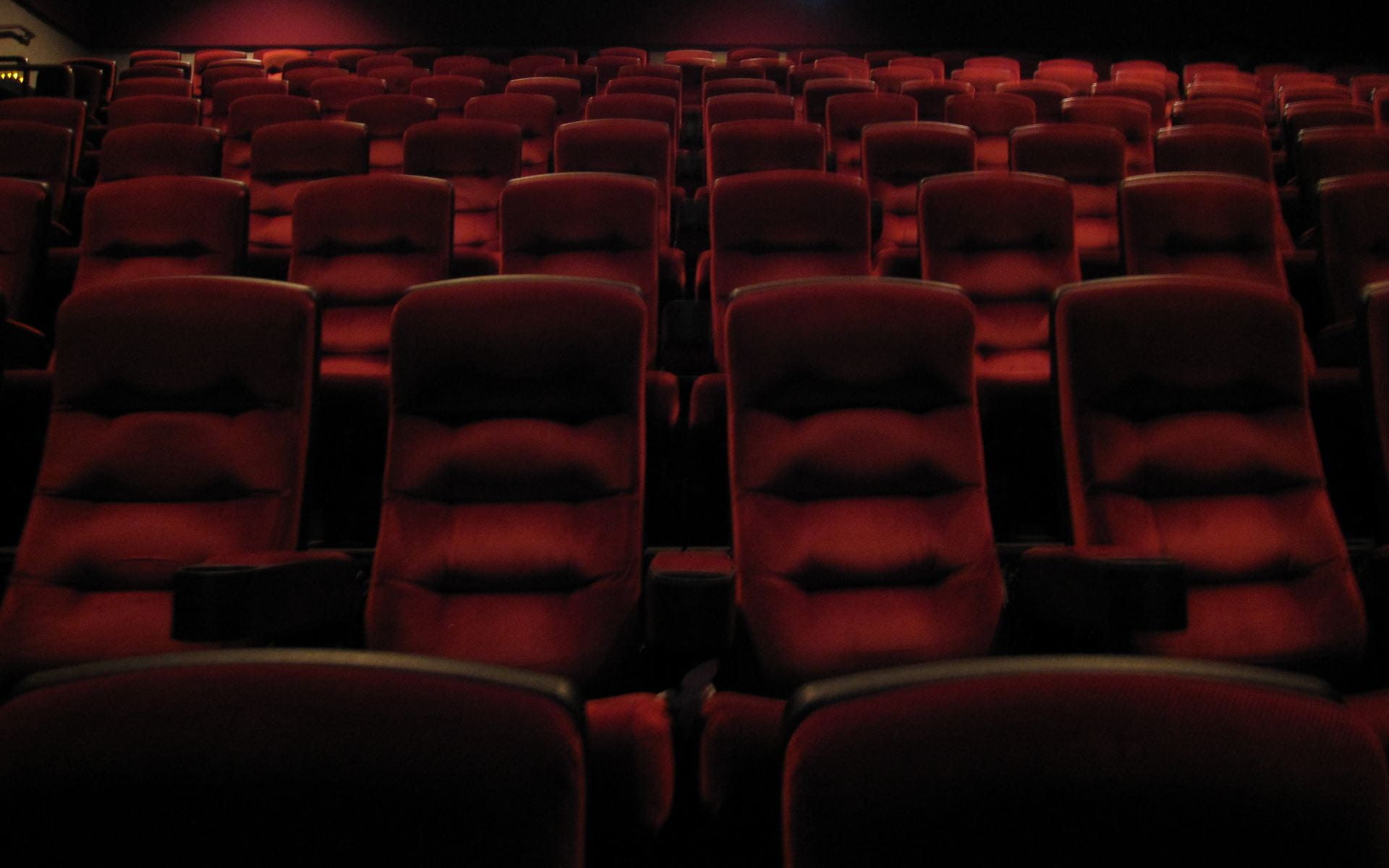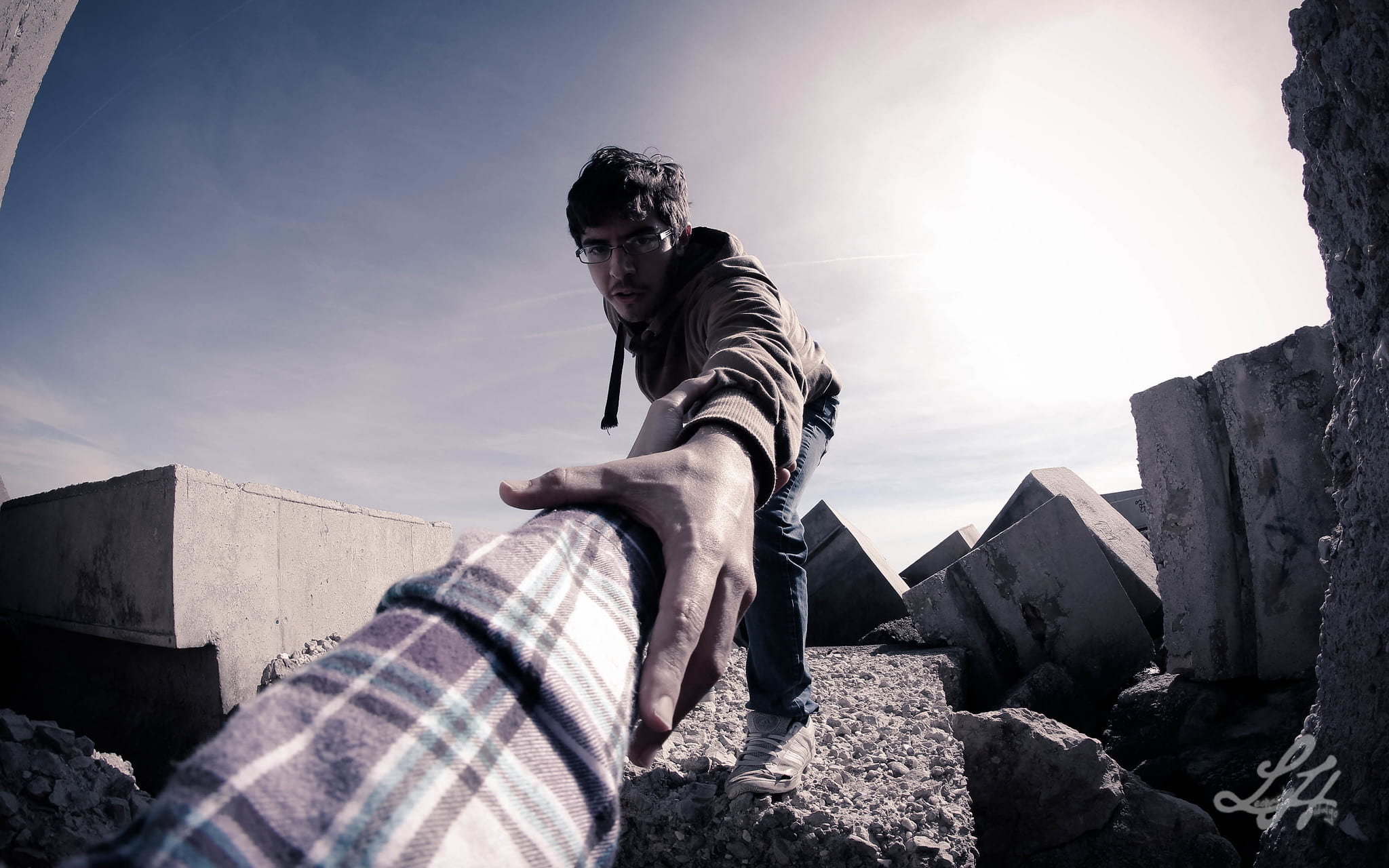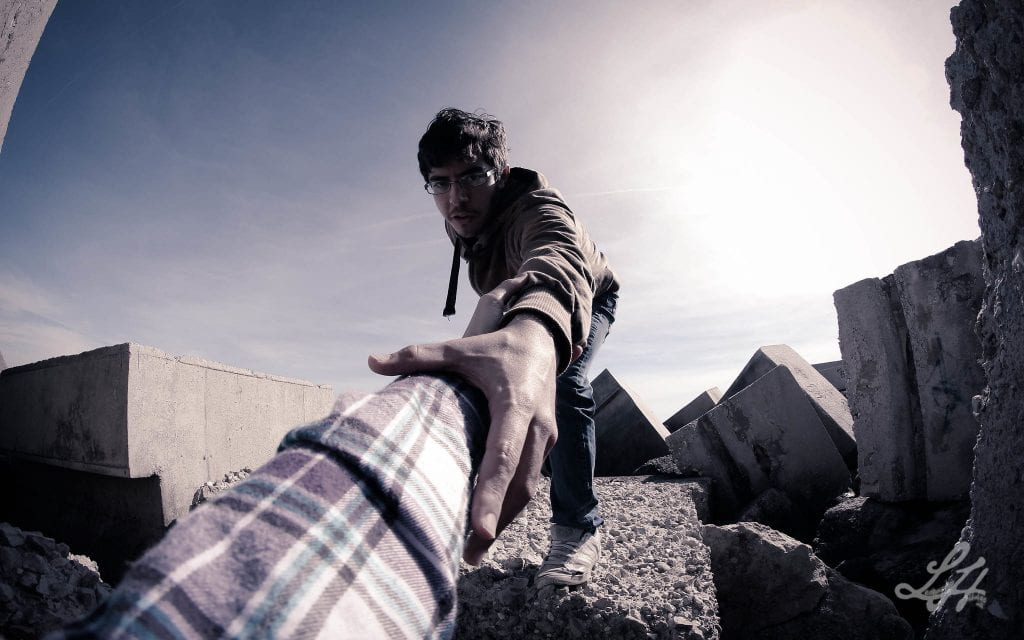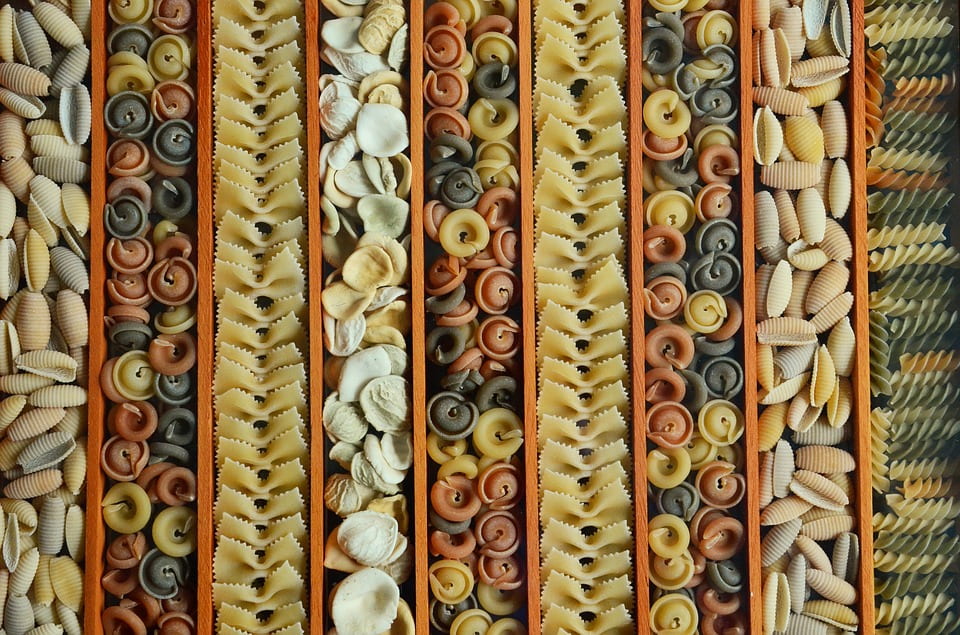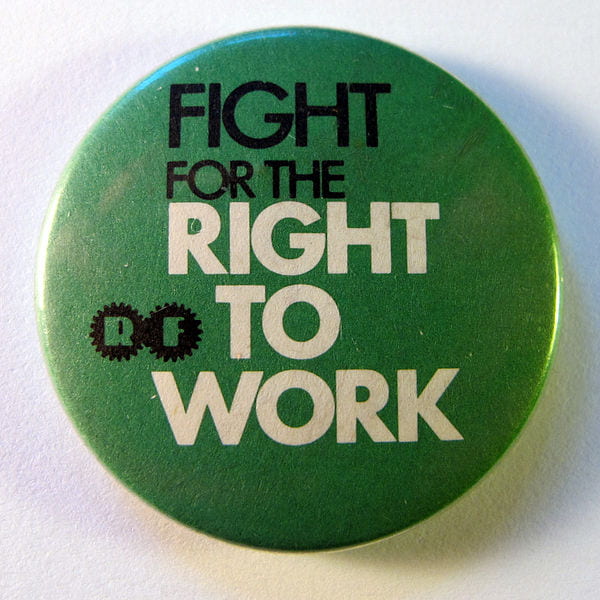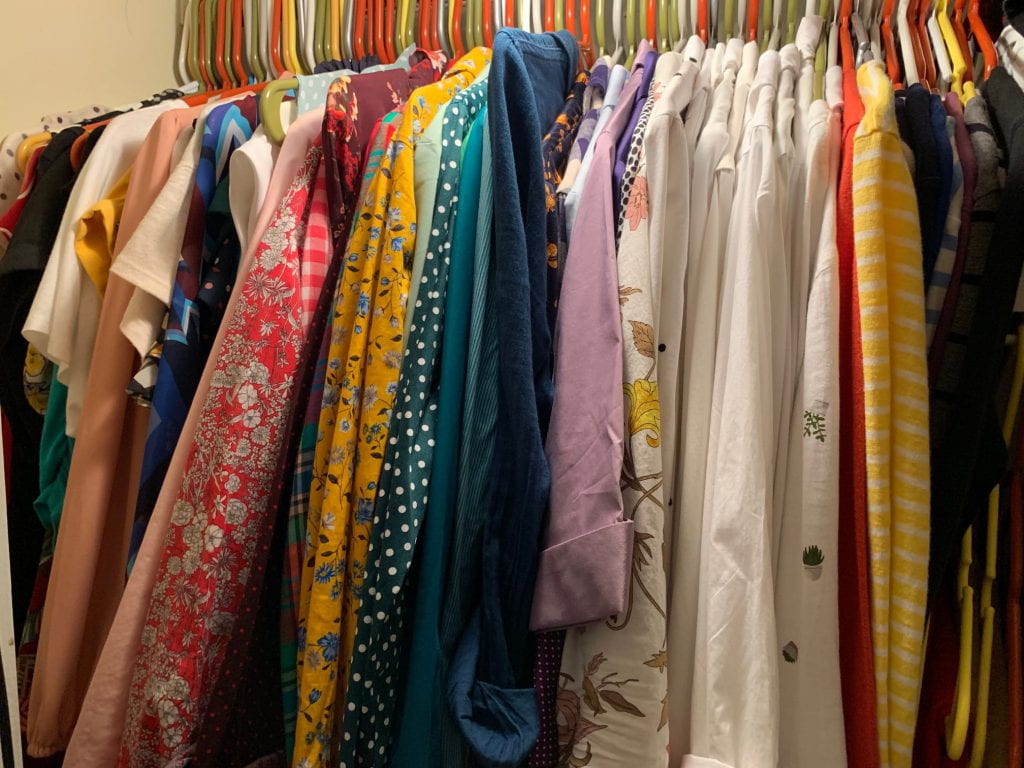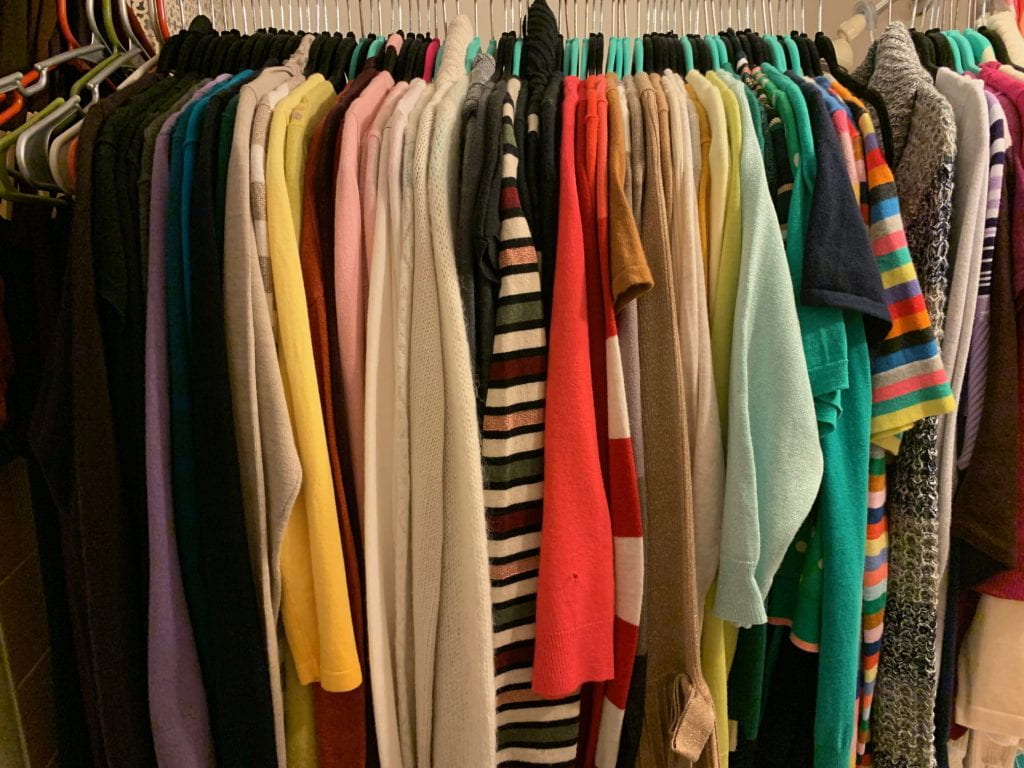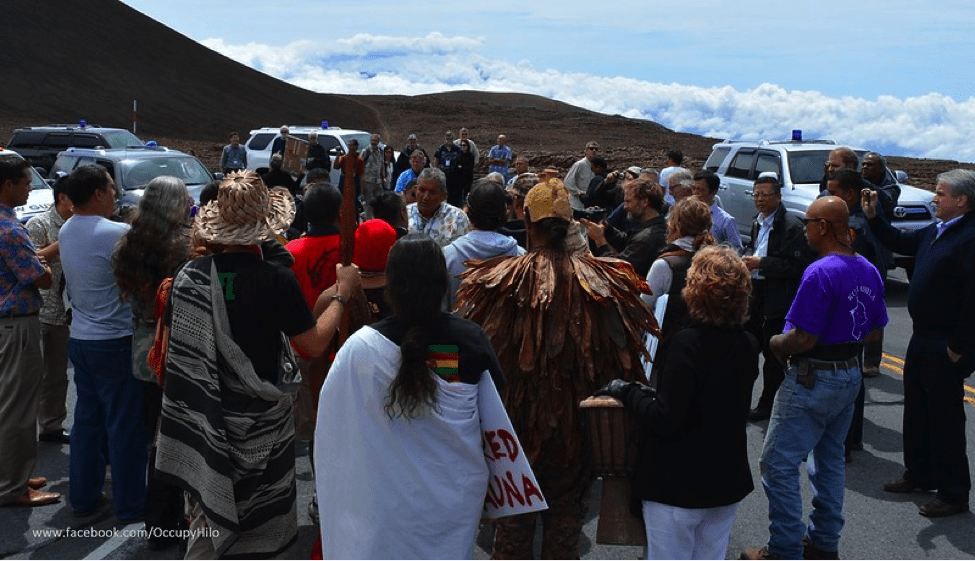
A $1.4bn observatory called the Thirty Meter Telescope (TMT) is slated to be built on Maunakea, a mountain on Hawaii’s Big Island, this year. This telescope would be the largest in the Northern Hemisphere and would provide images more than 10x sharper than those from the Hubble Space Telescope, allowing astronomers to explore even deeper into space. Yet, while the construction of a new telescope on a tall mountain might seem like a neutral endeavor, it is rife with issues of justice.
The construction of TMT was initially stopped in 2015 when Native Hawaiians and allies blocked the road to construction crews for months until the Hawaiʻi Supreme Court officially stopped construction that December. Then in 2019, developers were given the go-ahead to once again begin construction. In response, protesters (or as they prefer to be called protectors) turned out to block the road, with the protest coming to a head in July, when 38 kūpuna (revered elders) were arrested and Hawaii’s governor, David Ige, signed an emergency proclamation giving law enforcement more control over the area and allowed them to bring in National Guard troops. However, the protectors did not back down and have been camped at the road ever since.
In December, protectors at the Mauna Kea Access Road removed barricades and shifted their camps to the side of the road for the first time, opening the access road to all traffic except construction equipment as part of a deal with Mayor Kim. In return, the Mayor promised, “that no attempt will be made to move TMT construction equipment up the mountain for a minimum of two months.” Protectors hope this time can be used to influence decisionmaking in other arenas. While this update does look promising, in January the trial for the first group of protectors arrested began and has so far highlighted the opposing viewpoints of this protest. According to Deputy Attorney General Darrell Wong “These defendants may have characterized their actions as kapu aloha and peaceful, but nonetheless it involved a plan, an organized plan, something that was calculated and basically something that was unjustified.” Yet the protectors and their attorney view their actions as a response to the government blocking the activists from practicing their religion and culture, which is protected under the law.
Sacred Land
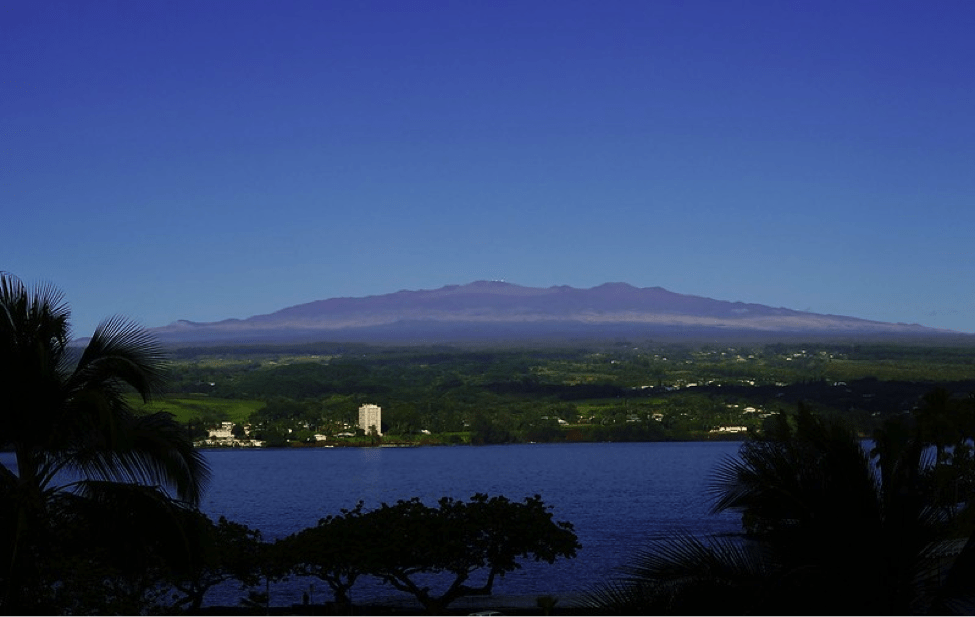
The protectors are not anti-science, as some TMT supporters have claimed. They are not opposed to the scientific advancements brought by such a telescope but they are opposed to its chosen location. Maunakea is a sacred mountain that is said to connect native Hawaiians to the cosmos. According to the Maunakea Visitor Information Station, the mountain is the dwelling place of the goddess Poli’ahu, it is associated with the Hawaiian deities Lilinoe and Waiau, and the summit is considered the realm of the gods.
The construction of TMT would negatively impact the sacred land and the telescope would increase activities on the mountain, further degrading the environment. The mountain top is already home to 13 other telescopes and since multiple alternative sites were found by the board of directors behind TMT to be “excellent for carrying out the core science” of the observatory, it at first seems off that TMT supporters seem so committed to this location. However, if we take a step back to look at the issue it is easy to see the link between this current protest and the history of ill-treatment to native Hawaiians and the continued desecration of their native lands.
A Brief History of US Interference in Hawaii
The history of Hawaii was absent from all of my education. It had always been just the 50th state and an island vacation spot until I lived in American Samoa and decided to learn more about the history of US intervention in Polynesia. It was then that I learned about the fraught history of Hawaii, a history that I honestly should have known and could have at least guessed at if I had taken a moment to. Just as North America was colonized, so too was Hawaii and many continue to consider the island to be occupied by the US.
In 1887, King David Kalakaua was forced, at gunpoint, to sign a new constitution for the Kingdom of Hawaii, which stripped the monarch of the majority of his authority. The new constitution had been written by a group of white businessmen, many of whom were connected to the sugar and pineapple plantations on the island, who wanted the Kingdom to become part of the US. When the King died, his sister Lili’uokalani succeeded him and attempted to restore power to the monarchy. This action angered the same white businessmen and they formed a 13-member Committee of Safety which forced Queen Lili’uokalani to abdicate her throne. The Committee then proclaimed itself the Provisional Government of Hawaii.
President Harrison signed a treaty of annexation with the Provisional Government, but before it could be ratified, President Cleveland was elected and the treaty was withdrawn. President Cleveland also appointed a special investigator to investigate the events in Hawaii, who found that there had been a coup. He then ordered Queen Lili’uokalani to be restored to power, but the Provisional Government refused and declared Hawaii a republic in 1894. Soon after the US government officially recognized it as a republic. In 1895, Native Hawaiians staged mass protests and eventually took up arms to stop the annexation, but the protest was suppressed and the leaders, along with Queen Lili’uokalani, were jailed. In 1898, Congress passed the “Newlands Resolution” officially annexing Hawaii and, in 1959, it became the 50th state.
For decades, the use of the Hawaiian language was punished, Native culture was suppressed and a large military presence was maintained on the islands. Many Native Hawaiians remember these US policies explicitly designed to suppress traditional Native Hawaiian religious and cultural practices, and while no longer explicit, native culture is still being infringed upon.
Religious Protections?
Theoretically, sacred land disputes should not exist because of existing protections of religion in the US. The First Amendment to the Constitution guarantees the right for people to practice their own religion, with the first clause providing that “Congress shall make no law … prohibiting the free exercise” of religion and the second prohibiting Congress from making laws “respecting an establishment of religion”. Since sacred lands are part of the “religious” practices of many Native Americans they should be protected. Unfortunately, this has not been the case in the courts. In Lyng v. Northwest Indian Cemetery Protective Association, a group of Native Americans from the Yurok, Karuk, and Tolowa tribes objected to proposed road construction within the Six Rivers National Forest because it would destroy land that they held sacred. The district, appellate, and Supreme courts all agreed that the activity would indeed violate their religious needs, yet the Supreme Court ruled against them. The Court ruled that in this case, while the activity would adversely affect their religion and destroy the sacred location, the government was not prohibiting the practice of their religion and therefore construction could continue (Bowman, 1989).
The establishment clause of the First Amendment, prohibiting government endorsement of religions, has also proven detrimental to the fight for the protection of sacred lands. According to the Supreme Court ruling in Lemon v. Kurtzman, government actions must be secular in nature, or at least neutral, and must avoid “excessive entanglement in religion”. In practice, this has resulted in the protection of sacred lands by the government being ruled unconstitutional. Based on this decision, courts found that the National Parks Service’s 1995 Final Climbing Management Plan (FCMP) for Devil’s Tower National Monument violated the establishment clause because it placed a mandatory ban on climbing during June out of respect for local tribal religious practices (Bonham, 2002). In response, the ban was changed to a voluntary one and the case was dismissed, however, some in the climbing community still oppose the ban in any form arguing that they have a right to climb the Tower. While this might appear at least as a partial win for the tribes, what it illustrates is that protecting native sacred land sites is considered a governmental endorsement of religion by the courts and would, therefore, violate the establishment clause.
In short, the courts have continuously failed to protect sacred lands and to adequately protect the practice of indigenous belief systems and cultural practices. A point to think about in light of this failure is that the US Constitution and legal system are not culturally neutral. It is rooted in European legal traditions and Christain morality and theology. Just as culture shapes how individuals see the world, it also shapes how the legal system sees the world and responds to disputes. The Anglo-American legal tradition is capable of recognizing the “sacred” when it takes the form of a church structure, a sermon or a piece of art; but a mountain, a lake, a river? These places are empty until people make their mark. Therefore these sacred land disputes are not merely conflicts between individual rights and government or corporate power but are conflicts between different cultures and different ways of seeing and experiencing the world.
Final Thoughts
In the case of Mauna Kea, the mountain is holy and an integral element of native Hawaiian religion and culture, a culture that the US systematically tried to wipe out. The land in and of itself is sacred and deeply connected to the people and that should be respected. While the building of a telescope may seem neutral, it is not. It is the destruction and desecration of the mountain and cannot be separated from the history of colonization and occupation of the island. In the end, no telescope is worth dehumanizing others. Mauna Kea shows that science does not happen in a vacuum. It must critically examine who is benefitting from the information and at what cost.
As Kealoha Pisciotta, one of the protest leaders, put it, “For Native Hawaiians, there is a question of our right to self-determination as defined by international law, but I think it’s so much bigger than that,” said Pisciotta. “It’s about us learning to live and be interdependent.”
